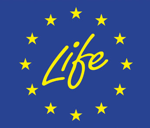
Zerovalent iron nanoparticles (nZVI) are metallic iron particles on a nanometric scale, with a typical size of fewer than 100 nanometers. These particles are very reactive and have a large specific surface, which allows them to react quickly with various compounds.
The applications of zero-valent iron (nZVI) nanoparticles in environmental remediation have been widely studied since they can degrade organic and inorganic contaminants in soils and groundwater. They act as catalysts for the pollutant reduction reaction, which makes them a more effective and economical alternative to conventional treatment methods. Its crystalline structure and its active surface allow them to catalyze chemical reactions. But in addition to being an effective tool for environmental remediation, they can also be used for other applications in engineering and science.
On the one hand, the nZVI has important applications in the field of medicine and biotechnology. They are used in the manufacture of contrast agents for magnetic resonance imaging (MRI), which allows the visualization of internal tissues and organs in the human body. They can also be used as nano transporters to deliver specific drugs to specific cells or tissues. For example, it has been shown that nZVI can be used with specific biological molecules to direct them to cancer cells, which increases their effectiveness in cancer therapy (Wu et al., 2022). In Figure 1, the deterioration of cancer cells is schematically shown by the action of these nanoparticles.
Figure 1. Illustration of the use of NZVI for the deterioration of cancer cells. Source: (Wu et al., 2022).
In the field of energy, nZVI can be used as catalysts in hydrogen production through water electrolysis. It has been shown that nZVI has high catalytic activity in water electrolysis due to its high specific surface and its ability to adsorb and transfer electrons (Chen et al., 2011).
In conclusion, zerovalent iron nanoparticles (nZVI) are extremely small particles of elementary iron that have great potential in multiple applications, which go beyond environmental remediation. In medicine, nZVI has applications in medical imaging and cancer therapy. In energy, nZVI can be used as catalysts in hydrogen production through water electrolysis. However, it is important to keep in mind that the nZVI also presents some challenges in its synthesis, characterization, and toxicity. In general, the use of zerovalent iron nanoparticles in various applications has great potential to improve our quality of life but also requires more research and development to completely understand its behavior and maximize its effectiveness.
Bibliography
Chen, K.-F., Li, S., & Zhang, W. (2011). Renewable hydrogen generation by bimetallic zero-valent iron nanoparticles. Environmental Nanotechnology, 170(2), 562-567. https://doi.org/10.1016/j.cej.2010.12.019
Wu, Y.-N., Yang, L.-X., Wang, P.-W., Braet, F., & Shieh, D.-B. (2022). From Microenvironment Remediation to Novel Anti-Cancer Strategy: The Emergence of Zero Valent Iron Nanoparticles. Pharmaceutics, 14(1), 99. https://doi.org/10.3390/pharmaceutics14010099